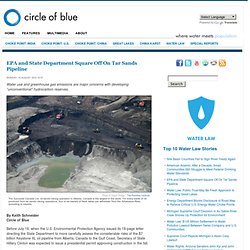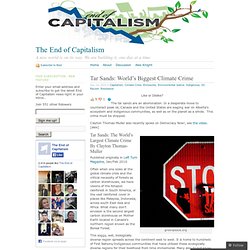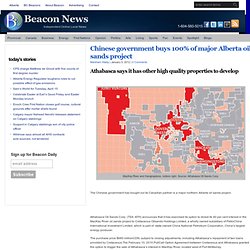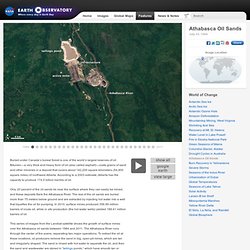

Gaz de schiste. Quand France 2 escamote un reportage sur le gaz de schiste > Gaz. L'association 'No Fracking France' a organisé fin août un voyage d'études sur le gaz de schiste au Québec et (elle) a proposé à des journalistes de l'accompagner.

Le reportage qui a été diffusé dans l'émission Complément d'Enquête sur France 2, le jeudi 20 septembre, porte selon l'association préjudice à l'ensemble de la délégation française parties en mission d'information afin d'évaluer les risques et les enjeux sanitaires et environnementaux liés aux exploitations de gaz de schiste outre atlantique. La journaliste de France 2, a contacté 'No Fracking France' au départ pour recueillir des informations et des contacts sur le sujet du gaz de schiste.
L'équipe journalistique de France 2, omniprésente sur les différentes rencontres et sur les différents sites visités, n'a en définitive rien retransmis de ce qu'elle a pourtant filmé en intégralité déplore l'association. "La journaliste de France 2 n'a pas respecté ses engagements de départ. " [ Source article - Reporterre ] EPA and State Department Square Off On Tar Sands Pipeline. Water use and greenhouse gas emissions are major concerns with developing “unconventional” hydrocarbon reserves.

Tar Sands: World’s Biggest Climate Crime « The End of Capitalism. The tar sands are an abomination.

In a desperate move to counteract peak oil, Canada and the United States are waging war on Alberta’s ecosystem and indigenous communities, as well as on the planet as a whole. This crime must be stopped. Clayton Thomas-Muller also recently spoke on Democracy Now! Tar Sands Impact on Climate Change. Posted on 23 August 2011 by dana1981 Beginning on 20 August 2011, Bill McKibben is leading what may be the largest green civil disobedience campaign in a generation, against the proposed construction of the 1,600-mile long Keystone XL pipeline.

The pipeline would transport oil from the Alberta tar sands in Canada to American refineries at the Gulf of Mexico, and many are concerned about the associated impacts on the climate. Digging up new sources of fossil fuels will inevitably increase the amount of CO2 in the atmosphere, and the tar sands result in higher carbon emissions than even conventional oil. On 15 June 2011, the Energy and Power Subcommittee of the House Energy and Commerce Panel approved a bill to expedite a decision on the pipeline, possibly trying to rush it through before adequate environmental impact assessments are completed. Chinese government buys 100% of major Alberta oil sands project : Prince George Beacon. MacKay River and Hangingstone, bottom right.

Source: Athabasca Oil Sands Corp. The Chinese government has bought out its Canadian partner is a major northern Alberta oil sands project. Athabasca Oil Sands Corp. (TSX: ATH) announces that it has exercised its option to divest its 40 per cent interest in the MacKay River oil sands project to Cretaceous Oilsands Holdings Limited, a wholly owned subsidiary of PetroChina International Investment Limited, which is part of state-owned China National Petroleum Corporation, China’s largest energy producer.
The purchase price $680 millionCDN, subject to closing adjustments, including Athabasca’s repayment of two loans provided by Cretaceous.The February 10, 2010 Put/Call Option Agreement between Cretaceous and Athabasca granted the option to trigger the sale of Athabasca’s interest in MacKay River, located west of Fort McMurray. UK 'extraordinarily naive' over Canada's tar sands lobbying. The UK government has been accused of being "extraordinarily naive" over tar sands information given to it by Canadian diplomats as part of a lobbying campaign, but which has since been contradicted.

Chris Davies, the MEP who is the Liberal Democrat environment spokesman in the European parliament, told me: "It is extraordinarily naive for ministers and officials to take the special pleading by Canada as though it were gospel truth, rather than what it is - an attempt to protect narrow financial interests. " Davies is savage about the UK government's position, for which fellow LibDem Norman Baker is the responsible minister: "The whole isssue of tar sands is becoming a huge source of embarrassment to every Liberal Democrat who wants and expects a government of which we are part to be leading on environment issues and in the fight against climate change.
" The Canadian government has repeatedly argued that the EU proposal, under the Fuel Quality Directive (FQD), is unworkable. Athabasca oil sands. The Athabasca oil sands (also called the Athabasca tar sands or Alberta tar sands) are large deposits of bitumen or extremely heavy crude oil, located in northeastern Alberta, Canada – roughly centred on the boomtown of Fort McMurray.

These oil sands, hosted in the McMurray Formation, consist of a mixture of crude bitumen (a semi-solid form of crude oil), silica sand, clay minerals, and water. The Athabasca deposit is the largest known reservoir of crude bitumen in the world and the largest of three major oil sands deposits in Alberta, along with the nearby Peace River and Cold Lake deposits.[3] Together, these oil sand deposits lie under 141,000 square kilometres (54,000 sq mi) of boreal forest and muskeg (peat bogs) and contain about 1.7 trillion barrels (270×10^9 m3) of bitumen in-place, comparable in magnitude to the world's total proven reserves of conventional petroleum.
History[edit] Photo NASA Earth Observatory ~ Athabasca (Alberta) Oil Sands growth 1984 to 2011. Photo NASA Earth Observatory ~ Oil Sands growth 1984 to 2011 Beaver Lake Cree Nation vs The Tar Sands The Beaver Lake Cree, a small, impoverished band of 900 people in eastern Alberta, are suing the Canadian federal and Alberta provincial governments to protect the land.

They claim that Alberta's tar sands developments are obliterating their traditional hunting and fishing lands in Alberta. The animals, fish, plants and medicine that sustain the Beaver Lake Cree are being destroyed. In Canada, the rights of Indigenous people are constitutionally protected. Investment in the bituminous sands in northern Alberta – the world’s last great oil field – totals approximately $200 billion. Already vast expanses of the boreal forest have been cut down – causing significant damage to the environment and to the earth’s well-being.
World of Change: Athabasca Oil Sands : Feature Articles. Buried under Canada’s boreal forest is one of the world’s largest reserves of oil.

Bitumen—a very thick and heavy form of oil (also called asphalt)—coats grains of sand and other minerals in a deposit that covers about 142,200 square kilometers (54,900 square miles) of northwest Alberta. According to a 2003 estimate, Alberta has the capacity to produce 174.5 billion barrels of oil. Athabasca Oil Sands. In the ranking of the world’s proven oil reserves, Canada stands behind only Saudi Arabia.

Canada possesses an estimated 178.6 billion barrels of crude oil accessible using current technology. Of this reserve, 174 billion barrels are in Alberta’s oil sand fields, which cover 140,200 square kilometers (54,132 square miles) of the province. The largest oil sand field is Athabasca, shown here. Athabasca Oil Sands. With the rising cost of oil, mining oil sands has become a profitable endeavor in the past decade. Oil sands consist of clay, sand, and other minerals, coated in water and thick, viscous oil called bitumen (or asphalt).
To get usable oil from this mixture, producers have to separate the bitumen from the sand using hot water, and then process the bitumen into crude oil. It is an energy-intensive process that until recently cost too much to be profitable. Millennium Open Pit Mine, Alberta. The United States imports more oil from Canada than from any other country: more than 1.8 million barrels a day on average in 2007 according to the U.S. Energy Information Administration (based on statistics through September). One of Canada’s largest sources of oil is the Athabasca Oil Sands. The oil sands are a mixture of bitumen (a tar-like oil), sand, clay, and water. Unlike many other oil sand deposits in Canada and around the world, the Athabasca Oil Sands are only shallowly buried, which allows them to be surface mined. World of Change: Athabasca Oil Sands : Feature Articles.
Athabasca oil sands.jpg - Wikipedia, the free encyclopedia. Centre for Energy : Athabasca Regional Issues Working Group Association. 4. Highway 63, between Fort McMurray and the Athabasca Oil Sands, Alta. - 10 most dangerous roads in Canada. The Integrity of Creation and the Athabasca Oil Sands - Justice, Peace, and Integrity of Creation. Athabasca oil sands. The Muskeg River Mine, where oil is extracted from the oil sands of Northern Alberta. - Image - Hydrocarbons Technology. Satellite Views of Canada's Oil Sands Over Time. Image courtesy Robert Simmon, NASA/Landsat/USGS By the time this image was taken in 1984, the company now known as Suncor Energy had been operating for 17 years here at Fort McMurray ( map ), in the cold, remote, northern reaches of Alberta.
When the site opened in 1967, Alberta Premier Ernest Manning called it a "red letter day" for North America. "No other event in Canada's centennial year is more important or significant," he said. Athabasca Oil Sands, Canada. Canada - June 2nd, 2009 The Athabasca Oil Sands are large deposits of bitumen, or extremely heavy crude oil, located in northeastern Alberta, Canada – roughly centered around the boomtown of Fort McMurray. These oil sands, hosted in the McMurray Formation, consist of a mixture of crude bitumen (a semi-solid form of crude oil), silica sand, clay minerals, and water.
The Athabasca deposit (also known colloquially as the Athabasca Tar Sands although there is no actual tar) is the largest reservoir of crude bitumen in the world. Athabasca Oil Sands. Canada - June 2nd, 2009 The Athabasca Oil Sands are large deposits of bitumen, or extremely heavy crude oil, located in northeastern Alberta, Canada – roughly centered around the boomtown of Fort McMurray. These oil sands, hosted in the McMurray Formation, consist of a mixture of crude bitumen (a semi-solid form of crude oil), silica sand, clay minerals, and water. Shell's major projects: in pictures. Science Photo Library. Shale Gas. Shale gas is found in very fine-grained sedimentary rock tightly locked in very small spaces and requires advanced technologies to drill and extract.
What is shale gas? Shale gas is natural gas found in very fine-grained sedimentary rock. The gas is tightly locked in very small spaces within the reservoir rock requiring advanced technologies to drill and stimulate (fracture) the gas bearing zones. Les gaz de schistes ("shale gas")